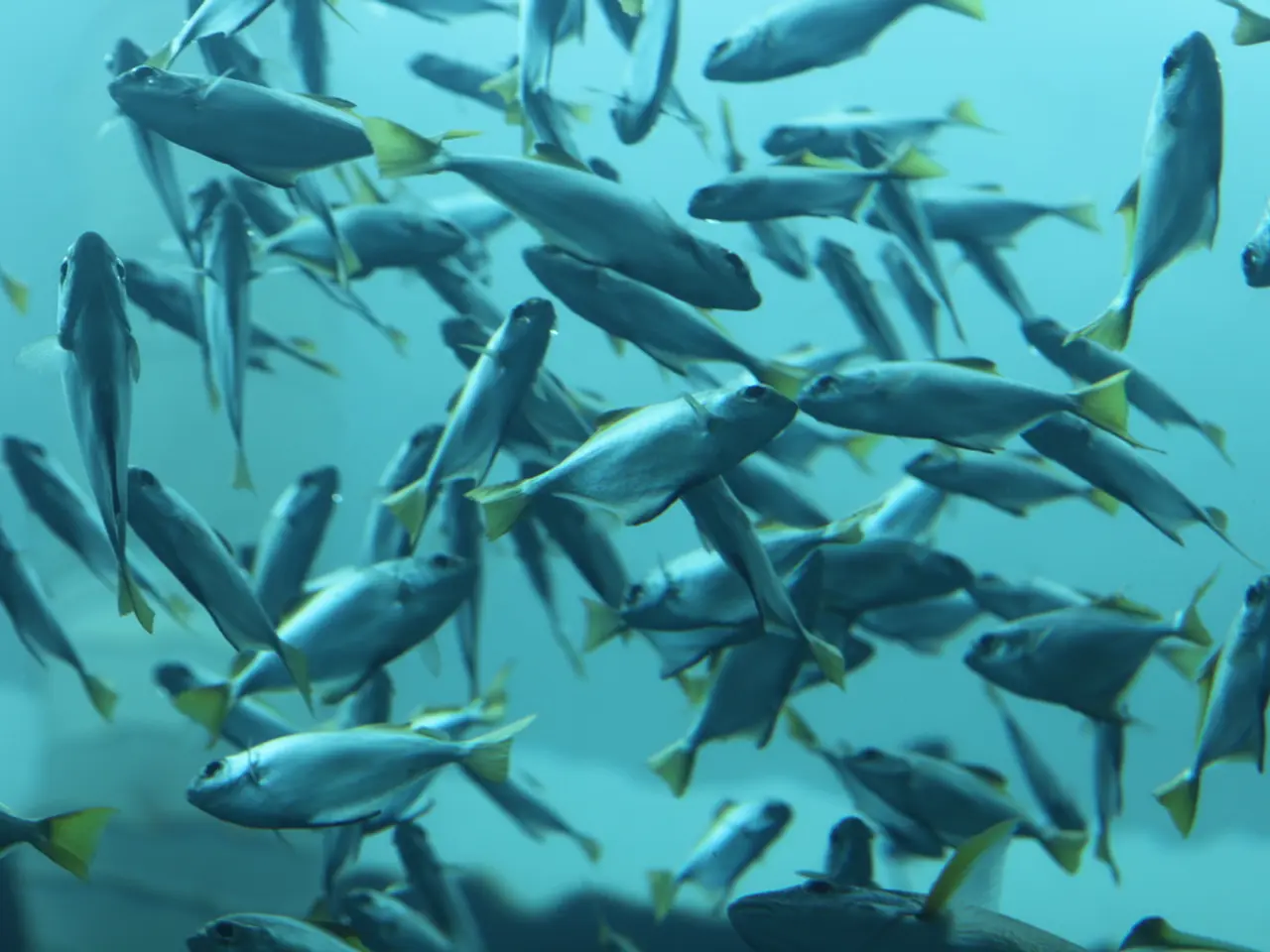Insightful Research Reveals Salmon's Reaction Patterns in Trawling Equipment
In the vast Bering Sea, scientists and fishermen are collaborating to improve the escapement rates of salmon in commercial trawl nets targeting Alaska pollock. The key to this endeavour lies in the design of salmon excluders, also known as bycatch reduction devices, which provide an opening in the trawl that allows salmon to escape.
A recent study, led by Noelle Yochum and David Bryan, has shed light on the behaviour of salmon just forward of the codend, the area where fish are collected during fishing. The researchers found that understanding what motivates salmon to swim forward and when this happens is crucial for improving salmon escapement opportunities.
The design of salmon excluders needs to focus on keeping salmon out of the codend to improve their chances of escaping. Salmon excluders rely on the salmon's ability to swim forward in the trawl against the direction of the water flow to escape. More salmon (77%) swam forward when vessel speed and water flow were lower. Fewer salmon swam forward as pollock abundance increased.
The study, conducted over more than 26 hours of video during seven trawl operations, captured nearly 3,000 individual salmon. Vessel speed over ground, water flow within the trawl, and pollock abundance appeared to affect whether salmon could swim forward and escape.
David Bryan, a fisheries biologist, used underwater cameras to observe salmon behaviour inside the trawl. His findings revealed that escapement is relatively low if salmon reach the codend. The majority of salmon (71%) were observed heading towards the codend, while only 24% were observed swimming forward, enabling potential escape. Only about 6.5% of salmon in the codend when fishing ended were able to swim forward and potentially escape before the trawl was on deck.
The observations were helpful in determining the next steps for improving salmon excluder design. Co-author Noelle Yochum stated that the focus should be on helping salmon escape during their first encounter with the excluder. The study emphasizes the need to make the escapement opportunity easier to detect as salmon move past the excluder.
Under the Magnuson-Stevens Act, federal fisheries must minimize bycatch to the extent practicable. In Alaska, the Bering Sea/Aleutian Islands groundfish fishery management includes a number of management measures to minimize bycatch. These measures, combined with the ongoing research and collaboration, promise to improve the future of Alaska's fisheries, ensuring a sustainable ecosystem for generations to come.
Read also:
- Trump's SNAP reductions and New York City Council's grocery delivery legislation: Problems for city residents highlighted
- Reducing dental expenses for elderlies in Sweden: Over 50% cut in charges for pensioners by the government
- Forty-year-old diet: A list of meal choices to savor
- Exiled Life's Conundrum: A Blend of Liberation, Disillusionment, and Distress





